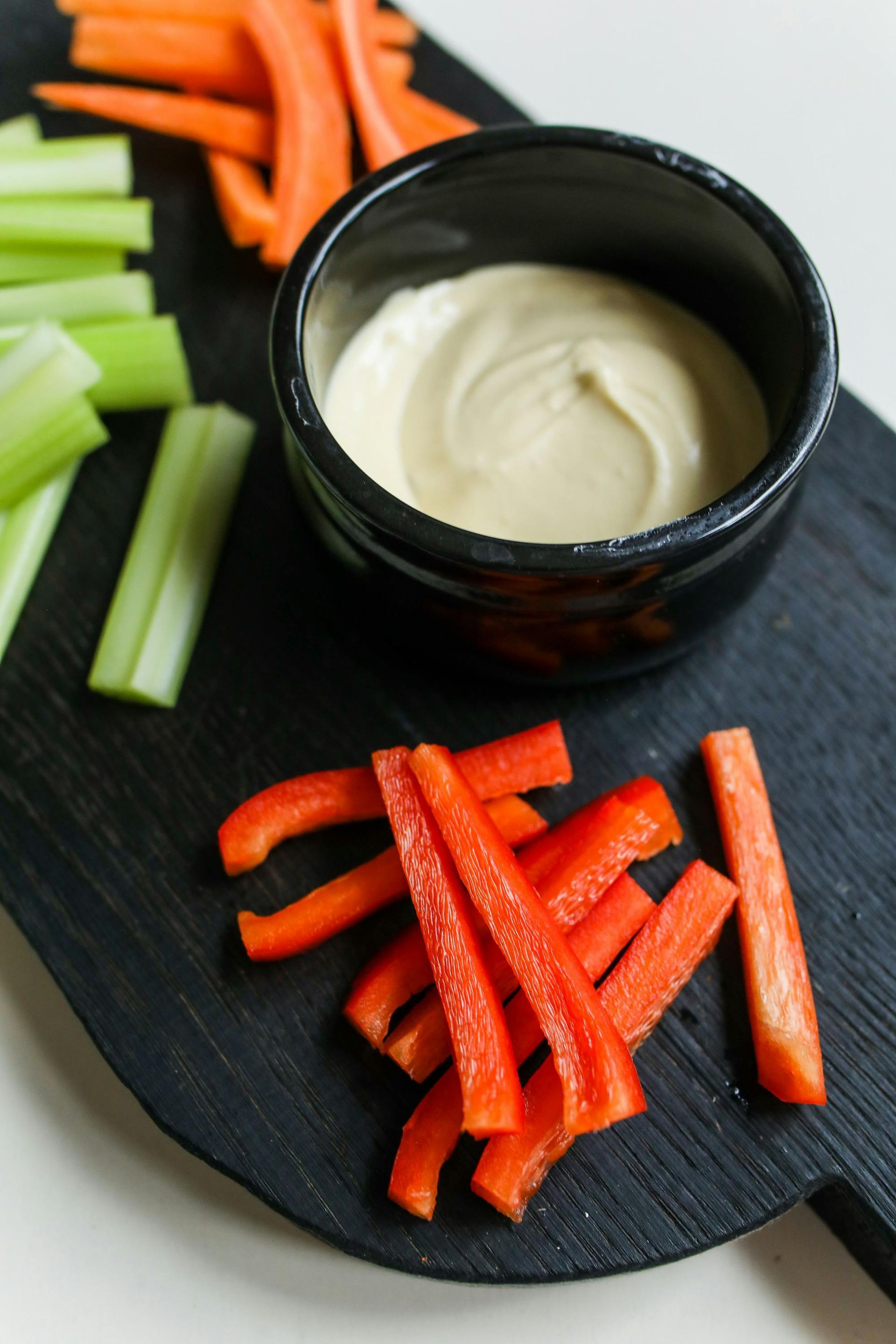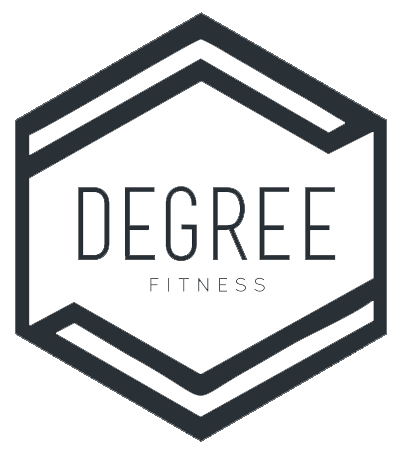As we move into Orange...
November 22, 2020
Written By: Coach Kelly Hey Huron Perth!
As many of you have seen, we have been moved to the "Orange" level of the Ontario Government's plan to curb COVID19.
What does this mean for you at Degree? You are kept safe, as always!
We are proud to share that we have always been going above and beyond regular health and safety guidelines.
This includes:
Minimum 10-12 feet between people working out
Each person has their own 7X7 workout space and uses their own equipment (no sharing intra-workout)
Masks are required at all times when in the facility. Masks can be taken off when exercising.
Windows are open during workouts, as well as members face away from each other while working out
Each person gets their own disinfectant spray, hand sanitizer and clean terry cloth each class to sanitize their hands and equipment
Workout spaces are mopped between classes/appointments for added protection
Small class sizes (max 8, average 6)
Members must reserve their class ahead of time, and book appointments ahead of time as well. Attendance is tracked.
Signage is placed at each entry to avoid coming if you are not feeling well, or experiencing symptoms.
Staff sign in and out each time they enter/exit the facility and stay home if they're not feeling well
We have added in the addition of Pre-Screening questions for all visitors for appointments or classes. It is a super easy Google Form that can be filed out when you arrive to your appointment.
We say it over and over again here at Degree: your health is your number one best defense against sickness and disease.
We're not talking big biceps and 6 packs, we're talking the ability for your heart and lungs to work effectively, for your bones, joints and tissues to support you and your brain health to keep you sharp.
This is all kept healthy and strong by being physically active.
Keep in mind for those that are still leery about in person activities, we always have private training
at quiet times of the day where it can just be you and your Coach, or online personal training
via Zoom or TrueCoach, as well as Nutrition Coaching.
If there is a will there's a way, and we are ready to help you discover yours!
There is still time in 2020 to take care of yourself! Email us at info@degreefitnessseaforth.com
or book your FREE meeting with one of our expert coaches by clicking here!

Written By: Mairead, Registered Dietitian As the weather turns colder, many of us start craving those comfort foods. Anything warm, maybe soupy, maybe cheesy, maybe carb-y. Things like soups, stews, casseroles, and melty sandwiches just sound better when it's colder and darker outside. But these kinds of foods may not fit with your nutrition goals, or may leave you feeling like you should've made a healthier choice. Luckily, we've got ideas to help you make those comfort foods healthier and pack more nutrition in! 1. Bulk up the veggies! Almost any meal can easily have more veggies added to it without making it feel less comforting. Vegetables add extra vitamins and fibre to make your meals more nutrient dense. They can also help bulk up a dish without adding a lot of calories. Try adding an extra dose of whatever veggies are floating around the fridge to your favourite soups, stews, and chilis. Frozen greens, like kale or spinach, are easy to add to pasta sauce as it cooks. Sandwiches can always have an extra vegetable added - add extra lettuce and tomato, or learn to quick pickle carrots and cucumbers. Frozen peas, green beans, and broccoli can easily be added to casseroles or mac and cheese. 2. Add legumes! Beans, lentils, and chickpeas are all packed full of fibre, protein, and vitamins and minerals, without any of the saturated fat (the kind that's not great for your heart) found in meat and high fat dairy products. They can easily be added to almost any soup, stew, or chili, either kept whole or blended to make the dish feel creamier. In any ground beef-based dish, you can add black beans or lentils without losing the taste or texture - try this in tacos or pasta sauce! Black beans can also be added to mac and cheese with some salsa for a Mexican-inspired twist. Beans are also cheap, making this an inexpensive way to boost nutrition and portion sizes without blowing your grocery budget. 3. Make sure there's a protein! Some comfort foods just don't have a lot of protein, especially if they're something that's mainly carb and cheese-based. To help you hit your fitness goals and feel full and satisfied, you do need some protein! While the ideas for beans above will help, there's many other ideas. Try adding Greek yogurt in place of some of the sour cream in casseroles, or to make a blended soup creamier. Canned tuna can easily be added to many casseroles or mac and cheese. Rotisserie chicken is also an easy option to add to vegetable-based soups or pasta dishes. 4. Balance the meal! Sometimes you don't want to mess with a good thing! You can also keep your favourite comfort food as is, and balance the meal out using the balanced plate model (1/4 plate is protein, 1/4 plate is a carb or starch, 1/2 the plate is vegetables). For example, this could look like a smaller serving of mac and cheese paired with a protein and vegetable, or spaghetti with meat sauce paired with a salad on the side.Take a look at what parts of the balanced plate your comfort food of choice covers, and find foods to pair with it to create that balanced meal! Looking for more personalized nutrition advice? Let's chat! Email mairead@degreefitnessseaforth.com to learn more about our Nutrition Programs, or click HERE to book your FREE Bite-Sized Nutrition Chat!

Written By: Mairead, Registered Dietitian Nutrition labels can be confusing! But they're on packaging to help you know more about your food so you can make choices that align with your health and fitness goals. Grab your nearest food label. On the black and white Nutrition Facts table, you'll see a list of nutrients with values beside them. For most of them, there will be an amount in grams or milligrams listed on the left and a percentage over on the right hand side. That percentage can help give us context! As you'll see listed in teeny writing at the bottom of the table, 5% is a little, 15% is a lot. This means that if there's a nutrient we want more of, like fibre, we want that percentage to be higher, ideally towards 15% or more. If there's a nutrient we want less of, we want it to be closer to 5%. For most normal healthy people, we want to have less sodium (salt), sugar, and saturated fat, while including more fibre. There may also be times when you want to focus on a specific vitamin or mineral, like iron or calcium. These are also listed with a percentage and can be used the same way. A key part of label reading is knowing what is most important for you. For many food categories, you can't prioritize everything. There may not be one product that is the lowest in saturated fat AND the lowest in sodium AND the highest in fibre AND has the most protein AND has the most iron ... the list could go on. But if you can narrow it down to a couple things that matter most for your health and fitness goals, you can start making choices based on food labels, without all the overwhelm. Check out your food labels, use the percentages, and make choices that fit with your goals! Looking for more personalized nutrition advice? Let's chat! Email mairead@degreefitnessseaforth.com for more information about our Nutrition Programs, or click HERE to book your FREE Bite-Sized Nutrition Chat!

Written By: Mairead, Registered Dietitian Snacking causes a lot of worry for many people! Is snacking bad? When should we be snacking? What's the best snack? Snacking itself isn't a bad habit, unless it's not aligned with your health and fitness goals. Snacks can actually do a lot of good to keep our energy levels up throughout the day and help meet our nutrition needs. Let's check out four ways you can improve your snacking habits! 1. Think about why! If you're concerned about whether your snacks are a problem, it's worth thinking about why you're snacking. Are you hungry between meals? Do you need some fuel before or after a workout? Are you bored at work in the afternoon or need a pick-me-up? Do you need something to do with your hands while watching tv? Are you starving at the end of the day when you get home before you have a chance to make dinner? Snacks serve lots of purposes, from keeping our energy stable during the day, to meeting emotional needs. If you don't feel good about why you're snacking, it might be time to find some other way to meet that need. 2. Plan for your snacks! Often, we may know we need a snack, but not be able to make a healthy choice about it because we're too busy or just too hungry. A little planning goes a long way! Planning ahead for these times can help us make choices that align with our goals, and have something at the ready before we're too hungry to make that healthy choice. Pack a snack or have one at the ready during the times of day or situations when you know you'll need it. 3. Make them satisfying! If a snack isn't satisfying, we'll be reaching for something else soon. For longer lasting energy, choose snacks that have a combination of protein and carbs. This might include yogurt with berries, a higher protein granola bar, crackers and veggies with hummus, or even a couple handfuls of trail mix. If you find yourself finishing your snack without even noticing what you've eaten, try taking a minute to eat more mindfully and focus on your food. This will help you feel more satisfied with it! 4. Fill your nutrition gaps! Snacks are another opportunity to add nutrition to your day. Are there specific foods you're trying to add more of to your diet? Are there nutrients you feel you may be lacking? Use snacks as a way to add these in. If you're concerned about protein, try adding canned tuna, hardboiled eggs, or Greek yogurt to your snacks. If you feel you're lacking vegetables or fruit, include at least one in your snack. If you're trying to include more plant-based proteins, lean on bean-based dips or try roasted chickpeas. The options are endless! Remember, snacking isn't good or bad, and can serve a lot of different purposes. Try using these tips to help your snacking align better with your health and fitness goals! Looking for more personalized nutrition advice? Let's chat! Email mairead@degreefitnessseaforth.com for more information about our Nutrition Programs, or click HERE to book your FREE Bite-Sized Nutrition Chat!
